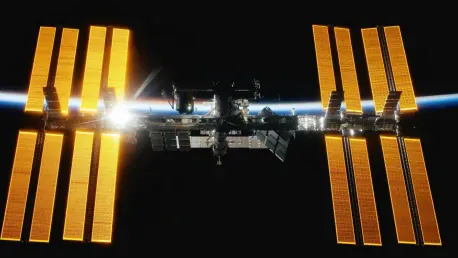The prospect of interplanetary travel has long intrigued both scientists and the public, but the technical and logistical challenges are immense. As the world moves closer to realizing missions to Mars, experts like former NASA astronaut José Hernández emphasize that such explorations are realistically about 15 years away due to numerous technical hurdles. Meanwhile, the focus remains on ensuring the safety and success of current missions, including the return of astronauts from the International Space Station (ISS) and preparations for future lunar bases that will serve as testing grounds for Mars-bound technologies.
Safe Return from the ISS
Astronauts Butch Wilmore and Suni Williams are scheduled to return to Earth following an extensive nine-month stay at the ISS. NASA, in collaboration with SpaceX, has been closely monitoring weather conditions to ensure a safe splashdown off the coast of Florida. The meticulous planning and coordination highlight the critical importance of safety in manned space missions, especially when returning to Earth. NASA has assured the public and stakeholders that their return procedures are firmly in place, countering any outlandish claims suggesting otherwise.
These assurances were necessary to address statements made by former President Donald Trump, who claimed that Elon Musk’s SpaceX would have to rescue astronauts allegedly abandoned in space by the current administration. NASA’s response demonstrated confidence in their established protocols and in their partnership with SpaceX, reinforcing that all necessary measures are being taken for the astronauts’ safe return. This incident underscores the importance of factual information and transparent communication in maintaining public trust in space programs.
Preparing for Mars Exploration
José Hernández’s insights offer a practical perspective on the future of space exploration, suggesting that NASA’s next significant steps should include decommissioning the ISS and investing in the development of a lunar base. This lunar base will be crucial for testing and refining the technologies needed for eventual Mars missions. The development of lunar infrastructure will not only serve as a stepping stone but also provide invaluable data on sustaining human life and operations on another celestial body.
Collaborations between NASA and private companies like SpaceX are pivotal in advancing these ambitious goals. The fiscal and technological preparations for deep space missions are monumental, requiring incremental advancements and continuous innovation. As NASA and its partners work towards establishing a lunar base, the lessons learned will be instrumental in overcoming the myriad challenges associated with long-duration space travel, life support systems, and reliable transportation to and from Mars.
The drive towards Mars is an exhilarating chapter in human exploration, with each successful mission and technological breakthrough bringing us closer to this goal. The journey ahead is complex, demanding both patience and perseverance. By focusing on intermediate milestones such as lunar bases and the safe return of ISS astronauts, NASA is laying the groundwork for future Mars exploration, ensuring that each step is meticulously planned and executed.
The Path Forward
The idea of traveling between planets has always fascinated both scientists and the public alike, but the hurdles to achieve it are formidable. As the globe inches closer to the possibility of sending humans to Mars, some experts, including ex-NASA astronaut José Hernández, point out we are likely about 15 years away from making this ambition a reality due to various technical issues that need resolving. For now, focus remains on the safety and success of current projects, such as the safe return of astronauts from the International Space Station (ISS). Moreover, preparations are also underway for establishing future lunar bases, which will act as critical testing sites for the technologies destined for Mars missions. These intermediate steps are essential for ironing out the intricacies involved in long-duration space travel. All these endeavors are part of a grand vision that aims to expand humanity’s reach beyond Earth and into the solar system, paving the way for future generations.









